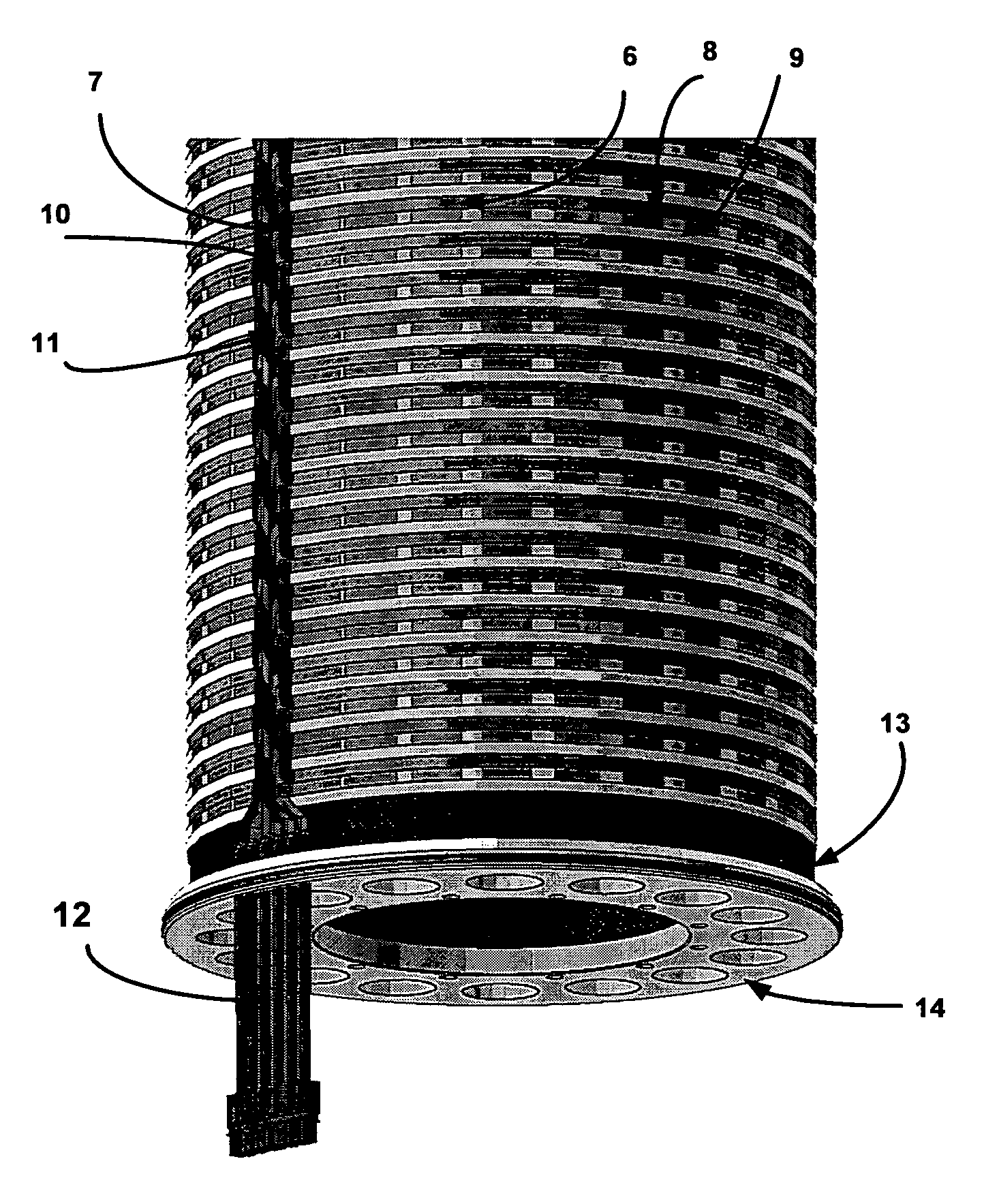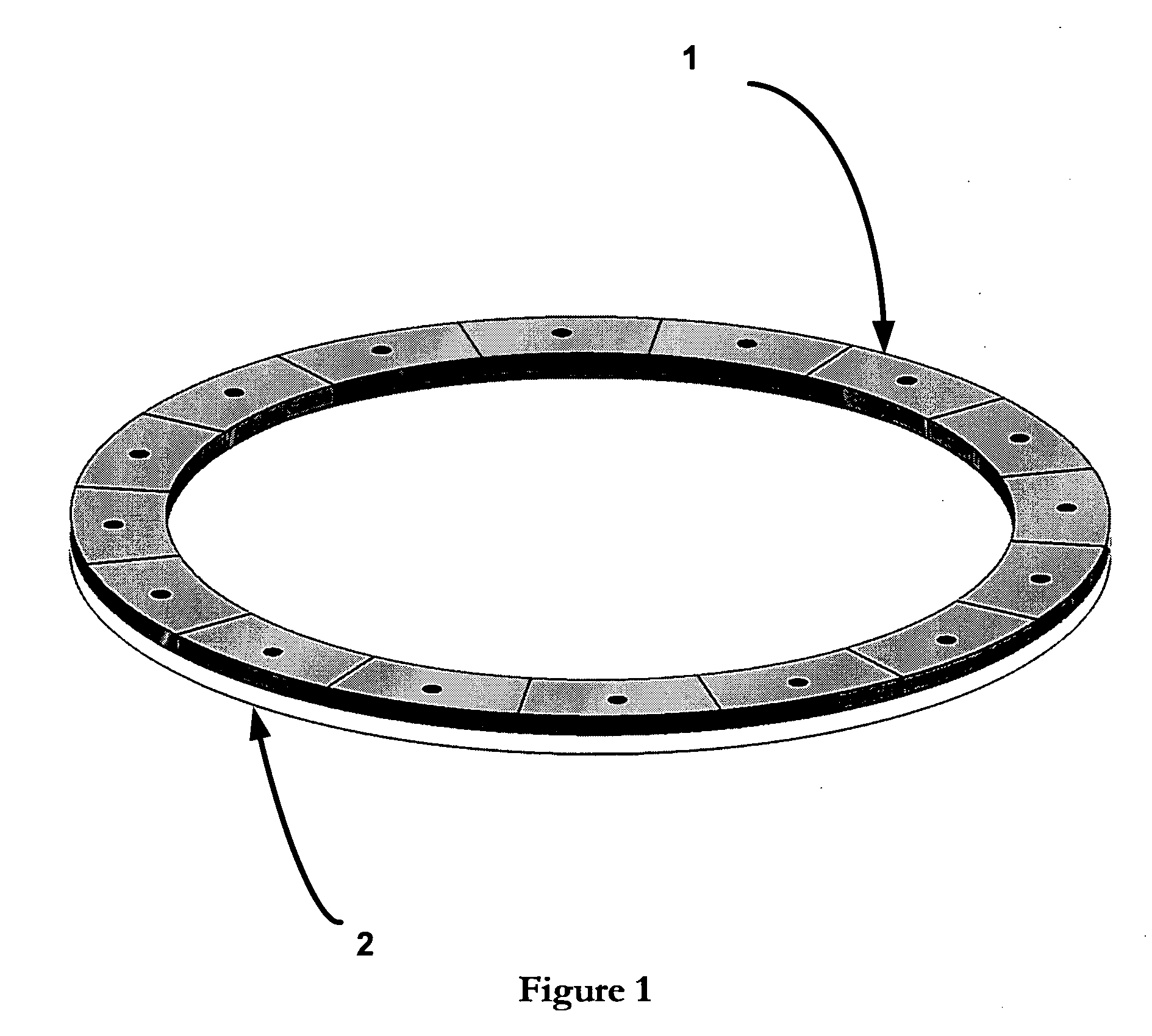Linear electromagnetic machines
- Summary
- Abstract
- Description
- Claims
- Application Information
AI Technical Summary
Benefits of technology
Problems solved by technology
Method used
Image
Examples
Embodiment Construction
[0055]Referring to FIG. 1, a plurality of separate magnetic segments 1 are shown to be provided, and are pinned and bonded to a lower pole piece 2.
[0056]FIG. 2 shows how an upper pole piece ring 3 is fitted to the array of magnetic segments 1, so as to produce a complete force unit. The inwards taper of the rings (which reduces the leakage flux) is clearly visible in the diagram.
[0057]FIG. 3 shows how the required number of force units (having components 1, 2 and 3 as previously described with reference to FIGS. 1 and 2) are stacked with like poles opposing and are clamped between two non-magnetic end pieces 4 and 5, so as to form a complete armature array.
[0058]FIG. 4 shows a typical conductor lamination as first manufactured from a metal sheet, having transverse conducting paths 6, connected by axial conducting paths 7. The axial conducting paths 7 may be considered to be equivalent to the end windings of a conventional coil-wound electrical machine.
[0059]FIG. 5 shows how the cond...
PUM
 Login to View More
Login to View More Abstract
Description
Claims
Application Information
 Login to View More
Login to View More - R&D
- Intellectual Property
- Life Sciences
- Materials
- Tech Scout
- Unparalleled Data Quality
- Higher Quality Content
- 60% Fewer Hallucinations
Browse by: Latest US Patents, China's latest patents, Technical Efficacy Thesaurus, Application Domain, Technology Topic, Popular Technical Reports.
© 2025 PatSnap. All rights reserved.Legal|Privacy policy|Modern Slavery Act Transparency Statement|Sitemap|About US| Contact US: help@patsnap.com



